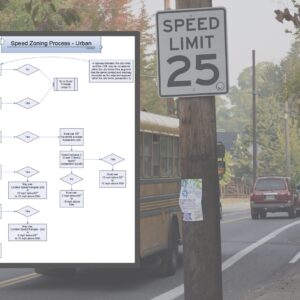The Portland area’s public transit agency has given itself the power to seize and discard bicycles abandoned at its stations for more than a few days.
As part of a general code overhaul approved last February and effective Wednesday with the start of TriMet’s fiscal year, the TriMet board of directors approved a new code provision allowing for “a bicycle left on any property of the District Transit System for more than 72 hours may be impounded.”
That’s three days.
TriMet’s code change also says that a bicycle can be immediately impounded if it’s parked illegally and “obstructs, interferes with or impedes use of the District Transit System by the public,” or if it’s an “immediate safety threat” in some other way.
Advertisement
The code requires the district to keep the impounded bike for at least 30 days and to make a “reasonable attempt to notify the owner of the impoundment and a description of how and by what date the bicycle must be claimed.”
The agency can also charge a “reasonable administrative fee” to cover its impoundment expenses.
After the 30-day waiting period, TriMet can then follow its usual procedure for disposal of abandoned or lost personal property.
Of course, many bikes that are abandoned in Portland have recently been stolen. So let’s hope TriMet’s staffers know about Bike Index and Project 529.
Correction 6:20: A previous version of this post listed the wrong number of days in an abandoned bike’s grace period.







Thanks for reading.
BikePortland has served this community with independent community journalism since 2005. We rely on subscriptions from readers like you to survive. Your financial support is vital in keeping this valuable resource alive and well.
Please subscribe today to strengthen and expand our work.
72 hours is 3 days, did you mean 144 hours? I am hoping that this does not apply to the racks at the airport which I don’t think tri-met controls as I often leave my bike there for more than 3 days when I fly somewhere.
Nope, I just can’t do math. Fixed.
Please, folks at trimet – heed Jonathan’s last comment about checking bikes you remove against local registries like BikeIndex.org. We’ve already found enough “stolen & stashed” bikes on PDX racks where thieves lock them up for days as they try and sell them on Craigslist.
Seems simple enough to me. Trimet owns its stations and can decide how long its bike racks may be used as bike storage.
Except that we own Trimet…
If we own TriMet then I want all the abandoned-ass bikes out of my racks, now.
we… not you.
Or perhaps I’m mistaken. Perhaps we don’t own Trimet. I always assumed we did/that it was a public entity.
No, we own it, it’s just that “we” contains people with well-considered opinions that differ from yours. Nonetheless I stand corrected:
If we own TriMet then I want all the abandoned-ass bikes out of *our* racks, now.
Yes, it’s a public entity – one that has to make dozens of decisions about the short, medium and long term every day. They have vocal constituencies with conflicting demands and a local newspaper that trumpets every misstep whether or not it’s of consequence. TriMet is far from perfect, but in my opinion, above average in the transit world.
As for the abandoned bikes, what’s the problem clearing them out from time to time?
“As for the abandoned bikes, what’s the problem clearing them out from time to time?”
I don’t think I’ve read many objections to it, when phrased that way. That sounds downright reasonable. To some, however, I think their policy sounded a little more aggressive than the way you put it.
i think they need to announce a 72 hour policy in order to have anything at all. in practice they may leave bikes on the racks until it looks like a problem, and then put a 72 hour tag on some of them.
Simple solution is to put a sticker on your bike with your phone number. Then if removed from a trimet rack, the “reasonable attempt” should include a phone call.
I do agree that Trimet should check all bikes against all stolen bike registries both at the time of inpound and just before disposal.
Are abandoned bicycles a problem so out of control that it deserves such a heavy handed tactic? I thought we were trying to build a multimodal system here. People have diverse needs which might include leaving a bike for more than 72 hours from time to time, especially considering the red line serves the airport. A real city that embraces multimodalism and actually tries to serve the needs of those citizens would address this situation in a much more reasonable manner. If its really an issue worthy of action, at least provide long term parking options at key transit centers so people have a legitimate channel to use. this kind insular thinking is holding us back. it leads people here to think impounding bikes is a solution meanwhile The Netherlands is building parking facilities at train stations that you can bike straight into.
NL also has a problem with abandoned and derelict bikes in those parking facilities and elsewhere. They tag them before they impound them, and tagged bikes are common where ever there is mass bike parking there.
As bike problems go around Portland, TriMet impoundment isn’t such a bad one to have. It means there are lots of bikes around and enough demand for bike lock-up facilities to make it a problem worth fixing.
Big +1 to checking Bike Index and Project 529 for all impounded bikes.
I like the contrast here of
(a) a bike parked legitimately in a Trimet rack, but not retrieved for whatever set of unforseen or forseen reasons within 72hrs: TOWED
(b) a car driven regularly by someone with a suspended license: NOT TOWED, even though the law allows/suggests this
http://www.oregonlaws.org/ors/809.720
What is your basis for this conclusion? I’ve seen Trimet haul away (legally parked) cars from their facilities; I assume it’s because they were presumed abandoned and not just arbitrary.
I was mixing agencies: bikes towed by trimet and cars not towed by law enforcement more generally. Perhaps this was not a fair comparison, but Trimet’s punitive, short fuse, attitude seemed to me outsized compared to what I’ve seen in relation to cars.
I’ve agreed with many of your comments & tone on this site, 9watts, but IMO, depicting TriMet as “punitive & short fused” in regards to freeing up bike parking (for bicyclists who Park & Ride) hurts the bike mode in the long run. Your comparison between agencies may be confusing the matter.
The MAX & bike combo is key for many people who must travel long distances daily and don’t use a car to do so. Unfortunately, abandoned bikes (whether they’re individual-owned or corporate-owned) make bike parking unavailable for the rest of the people biking. Saying so and doing something about it does not diminish the bike mode, but rather, helps it succeed.
You could maybe fault TriMet for being too “long-fused,” in that they have not installed enough bike parking proportionate to car parking thus far. Who knows where funding for that comes from. But forming an assumption that the removal of abandoned bikes is a bad thing for the bike mode is not helpful to the success of active modes succeeding overall, IMO.
Good points, and I don’t disagree with any of them. It was mostly the 72hr window that seemed to (potentially) cut into plenty of scenarios that seem utterly reasonable, to me. But Trimet may have studied this issue and identified a statistically reasonable cutoff.
You’re right, it’s not a fair comparison. Different agencies have different goals. If Trimet lets cars sit abandoned in their lots then by all means criticize, otherwise you’re just spouting nonsense.
The cars that Trimet hauls away are parked for more than the posted time. They are not locked to staples.
It could be if a rack is full and there is no place to lock up your bike. Most the Max stations don’t really have that much in rack space, even a couple of abandoned bikes can make a difference.
Yes, thank you. The MAX station I use, has had two bikes locked there for a week now, which is 84 I mean 168 hours! 🙂 Since the total capacity is only 6 usable spots, there goes 1/3 of the bike parking capacity. By 8am every day, this rack is full. So, while I’m sure leaving a bike there frees up tons of lovely space in somebody’s apartment and/or meth den, people who RIDE their bikes need that space.
The bigger issue of course is that there’s an artificial and needless scarcity here. In other words there’s not enough bike parking and there’s no good reason for that. This particular MAX station has 443 automobile spots, so I would expect 443 * 0.05 (assuming 5% mode share) = 22 bike spots. Maybe then they would have the space to endulge people’s bike storage needs.
Excellent point. Why not just add some bike racks to the few places where they consistently are crowded? Guess that’s too difficult a solution for the Trimet bureaucracy to come up with.
My comment was a reply to Mikeybikey’s OP.
And the train station bike parking is being expanded from over 4,000 bikes to 12 thousand bikes. All the bikes are checked in and out so there is no theft or warehousing of stolen bikes.
They offer bike lockers at .05 an hour for up to 10 days, that they don’t consider abandoned for 14days. I think people need to actually see whats offered before deciding they need to be so sensitive to everyone’s need for someone else to be responsible for their stuff.
I don’t live in Portland, but this seems to me to be a reasonable policy that makes it easier for people to ride to the bus stop and park their bikes there.
TriMet needs more Bike and Rides!
(it costs as low as $0.01 per hour to store your bike)
YES. The Bike and Ride cages work great, keep the bike more secure, and are quite cheap. Would love to see more of these.
How will they know how long a bike has been in place? Whether the owner has been by in the interim, or moved it and then re-secured it to the same place? How will an owner (who hasn’t seen this article) know their bike was impounded and not stolen?
excellent points! I’d be curious to hear Trimet’s responses.
The way I recognize that a bike hasn’t moved, is by noticing both valve stems are in the exact same spot, indicating that either a statistically very unlikely event has happened, or those wheels have not turned.
And just in case you like math, I’d say I might fail to recognize a valve stem position offset of up to about 5 degrees. Which means there are 360/5 = 72 possible valve stem positions per wheel. So the probability of both stems being observed by me to be in the “same” position after a ride, would be (1/72) * (1/72) = 0.0001929 or 1:5184, meaning this technique is about 99.98% reliable. Never tell me the odds 3PO.
But I ride a unicycle!
Ha – well interestingly enough the reliability only falls to 98.61% in that case. Unless I’m doing the math wrong.
I’d guess they’ll simply stick a “this bike will be removed in 24 hours” sticker on the immobile object.
With cars a typical low-tech method is to mark the tire with chalk, which stays on as the vehicle is parked but wears off quickly when it moves.
We need paid bike parking to make sure there will always be an optimal number of spots available. I read somewhere that 15% of cyclists are just circling the block looking for a place to park.
I’m a little more concerned about the immediate removal clause for bikes deemed to be parked improperly.
Like say parked attached to something other than the pretty, but sharp edged and relatively scarce bike staples as opposed to any other solid object within whatever they consider their sphere of influence around transit stops.
I own one bike. I do not lock it to any bike stand or staple. I never am further than 10 foot from it unless it is locked in my garage. The car is outside. If I am shopping on the bike it is inside the store with me. If the proprietor does not agree with me I go somewhere else. When I do MAX it is with me. Very seldom is there more bikes than hangers on the MAX trains I will stand my bike next to another bike when there is as there is more than enough room for up to 8 (even if the have only 4 hangers) road bikes. I also enter and exit with the bike on end.
I think that the vast majority of bikes left for more than 12 hours at any outlying MAX station are undoubtedly storage for stolen Craigslist bikes.
I’m all about clearing abandoned bikes off racks.
But 72 hours is a really short for “abandoned”.
I’d think 2 weeks or a month would be more reasonable.
And 6 bike spaces for a MAX stop seems pretty skimpy to begin with.
They want people to bike to transit and use the service, right? And if a customer needs a bike at both ends, they’d rather the customer have 2 bikes rather than put their bike on the train twice a day, right? Seems that folks should be able to do this without worrying about TriMet cutting off their work-end bike if they end up with a bad cold and are sick for a week.
My $0.02
Ted Buehler
I suspect TriMet will only respond to complaints or obvious issues where a locked bike appears abandoned, such as when a wheel is missing.